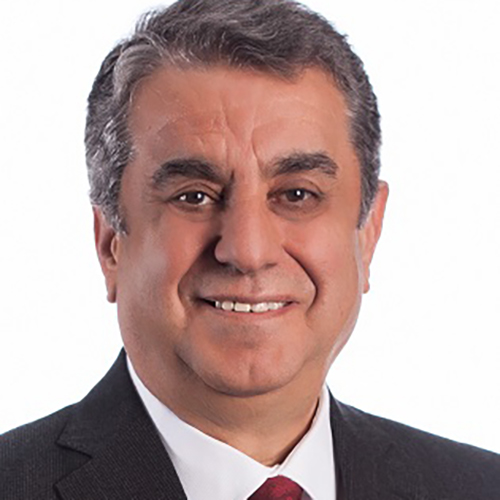2025: Direction of the Race in Direct Conversion of Solar Energy into Electrical Energy Technologies
Abstract
While the investment target for the transition to low-carbon energy technologies in the Global Net Zero Scenario is about 5.6 trillion$, the realized investment remained at 2.1 trillion$ in 2024. In order to comply with the net zero target, expected annual investments are 5.6 trillion $ between 2025 and 2030; 7.6 trillion $ between 2031 and 2035; 7.8 trillion USD between 2036-2050. In 2024, a total of 929 billion dollars of investment was made, including 503 billion dollars in the photovoltaic energy sector, which is a leader in renewable energy technologies, and 426 dollars in the wind energy sector. In 2024, the newly established solar power plant reached 600 GWp, while 334 GWp of the installations were made in China and 256 GWp in other countries. The total installation in the world reached 2,217 GWp. The development of annual global installations towards 2050 is assessed in three different scenarios: (1) Conservative Technology Innovation Scenario: Minimal technology advancement, low levels of research and development (R&D) investment, and global module pricing consistent with the base year; (2) Moderate Technology Innovation Scenario: Continuation of current industry technology roadmaps with R&D investment levels similar to today. No significant innovations are reflected in technology and industry; (3) High Technology Innovation Scenario: Increased R&D spending that creates significant innovations and allows historical development rates to continue. In the third scenario, annual installations are expected to reach 1000GWp with a CAGR of approximately 6%, and total installations are expected to approach 4000GWp.
In 2024, solar power plant installations in Turkey reached 20GWp, and the Ministry of Energy and Natural Resources announced that the PV power installations are planned to reach 77Wp in the next ten years. The rapid increase in the installation of solar power plants on the way to the 2050 zero carbon target brings a competitive race in every buckle of the photovoltaic energy conversion technology value chain. In the race in solar cells, which is the heart of photovoltaic conversion technologies, 95% of the market is shaped by cells on crystalline silicon wafers and in 2023, 99% of PV cells were produced on single crystalline (mono) silicon wafers. The evolution of cell technologies produced on single crystal silicon, starting from Aluminium Back Surface Field (Al-BSF), continues as Passivated Emitter and Rear Contact (PERC), Passivated Emitter Rear Totally-Diffused (PERT), Tunnel Oxide Passivated Contact (TOPCon), Heterojunction Technology (HJT), Interdigitated Back Contact (IBC), Heterojunction Back Contact (HBC), Metal-wrap through (MWT), Tunneling Oxide Passivated Back Contact (TBC ). Although each technology has its own strengths and weaknesses, according to 2024 data, efficiencies are around 23% for PERC cells and the market share is around 40%. TOPCon, which entered the market in the second half of 2010, exceeded 26% in efficiency and increased its market share to 49%, becoming the dominant player in PV the sector. Efficiency over 26% has been achieved for HJT cells, and the market share remained at ~ 8% due to the obstacles that had to be overcome in production technologies. Apart from these technologies, promising IBC technologies are also trying to take their place in the race with higher efficiency. This study discusses the direction of the race in direct electricity Generation (Photovoltaic Conversion ) Technologies from the solar energy with the updated data in 2025.
Biography
Prof. Dr. Şener Oktik graduated from Ankara University with a degree in Physics in 1976 and received his M.Eng. in Applied Physics in 1977 from the same university. He obtained a Ph.D. degree from Durham University (UK), Department of Applied Physics and Electronics in 1982. Prof. Oktik became Associate Professor in 1986 and a full Professor in 1995. During his academic career, he has worked as a Lecturer, Research Scientist, Senior Researcher and Administrator, Senior Administrator at Durham University (UK), Lecce University (Italy), Stuttgart University (Germany), Selçuk University, Muğla University and Kadir Has University (Türkiye). Prof. Oktik was the third and fourth term of President/Rector of Muğla University between 2002 and 2010. He has also worked as a Senior Research Scientist, Technologist, and Senior Executive in industrial research and technological development laboratories in England at BP Solar, Sunbury, Imperial Chemical Industries PLC (ICI), Paints Division Slough Research Labs, and Industrial Research Labs of Durham University (UK), Centre for Solar Energy and Hydrogen Research Baden-Württemberg (ZSW-Germany) and in Türkiye at Anel Group, Arıkanlı Holding and Şişecam. He has been a member of many NGO and occupational organizations and currently Prof. Oktik is a Member of the Advisory Committee of International Commission on Glass, “ICG,” Conference on Coatings on Glass and Plastics, ”ICCG,” Society of Vacuum Coaters “SVC,” The Centre for Functional and Surface Functionalized Glass (Slovakia), he is also in the Scientific Committee of “European Photovoltaic Solar Energy Conference EU-PVSEC” and representing Turkish Physical Society at the European Physical Society (EPS). At national level, he is the Honorary Chairman Turkish Solar Energy Industry Association, a Member of Steering Committee of Turkish Clean Energy Foundation, a Member of Advisory Committee to Turkish Science, Technology and Innovation Policies Council, a Member of Board of Trustees of Sıtkı Koçman Foundation and Turkish Fundamental Sciences Research Foundation. Prof. Oktik is currently a Senior Lecturer at Maltepe University and author/co-author of over 100 scientific and technical publications and inventor/co-inventor of two world patents. Prof. Oktik has been a Member of Board of Directors of Türkiye Şişe ve Cam Fabrikaları A.Ş. since March 27, 2020.
